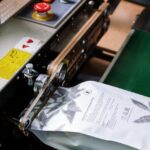Introduction to the Kaiser Roll
Among the vast array of bread options that grace bakery shelves across the world, the Kaiser roll stands out with its regal charm, crusty exterior, and distinctively folded crown. Known in some regions as a “Vienna roll” or “hard roll,” this bread item isn’t just a bakery staple—it’s a product of deep culinary history, cultural significance, and enduring popularity.
While it may seem simple at first glance, the Kaiser roll is the result of precise technique, tradition, and evolution over time. It has become a fundamental component of breakfasts, sandwiches, and gourmet dishes globally, particularly in Central Europe and North America. In this article, we’ll explore everything from its historical roots to its modern adaptations, baking techniques, variations, nutritional profile, and how it remains a bakery favorite even in the age of artisan bread trends.
The Origin and History of the Kaiser Roll
The Kaiser roll traces its history back to Austria, specifically Vienna, during the 18th century. The name “Kaiser” directly translates to “emperor,” and many food historians attribute this regal title to Emperor Franz Joseph I of Austria. It is believed that this type of bread roll was either named in his honor or was a favored item at his royal banquets.
The distinctive five-point crown design on top is symbolic, often interpreted as representing royalty. Traditionally, the Kaiser roll was made from simple ingredients—wheat flour, water, yeast, and salt—yet its uniqueness stemmed from its method of shaping. Originally, skilled bakers hand-folded the dough to create the signature crown effect, which eventually became a symbol of artisan quality.
During the 19th and 20th centuries, as Austrian immigrants settled in different parts of the world, particularly the United States, they brought their culinary traditions with them. The Kaiser roll became a fixture in delis and bakeries in cities like New York and Chicago, where it was used as a sturdy, flavorful base for sandwiches of all kinds.
Stick around and explore more articles that might catch your interest!
Characteristics and Structure of a Kaiser Roll
One of the most recognizable features of the Kaiser roll is its crusty exterior and soft, airy interior. This duality of textures makes it a versatile bread suitable for a variety of culinary applications. The outer shell is typically golden-brown, sometimes sprinkled with poppy seeds or sesame seeds, and boasts a firm crunch when bitten into. The inside, in contrast, remains soft and slightly chewy, offering just enough substance to hold sandwich fillings without becoming soggy.
Iconic Crown Pattern
The crown or star pattern on top is achieved either by hand-folding the dough or by using a Kaiser roll stamp. Traditional bakers still prefer hand-knotting for authenticity, although modern commercial bakeries often rely on mechanical stamping for efficiency. This pattern is more than decorative—it helps create even baking and crust development.
Ingredients Used in Traditional Kaiser Rolls
Though simple in composition, the ingredients used in Kaiser rolls play a crucial role in achieving the perfect texture and flavor.
- Wheat Flour: High-gluten flour is typically used to provide structure and chewiness.
- Water: Hydration is vital for yeast activation and gluten development.
- Yeast: Active dry or fresh yeast is commonly used to help the dough rise.
- Salt: Adds flavor and helps control fermentation.
- Sugar or Malt: A small amount of sugar or malt syrup may be added to aid browning and flavor complexity.
- Fat (optional): Some versions incorporate a bit of butter or oil for tenderness.
The Art of Shaping the Kaiser Roll
The shaping process is what distinguishes the Kaiser roll from other bread types. Here’s a breakdown of traditional and modern shaping methods:
1. Hand-Knotting
This traditional method involves folding the dough into a knot shape that, once baked, creates the distinctive crown. It requires skill and practice but is considered a mark of artisan craftsmanship.
2. Stamping
For mass production, bakers use a Kaiser roll stamp to imprint the top of a round dough ball before baking. While less time-consuming, it can slightly alter the texture due to differences in dough tension.
3. Fermentation and Proofing
After shaping, the dough is left to ferment and rise. Proper fermentation enhances flavor, while final proofing before baking ensures the roll puffs up with a light and airy crumb.
Popular Uses of Kaiser Rolls in Cuisine
Thanks to their structural integrity and balanced flavor, Kaiser rolls are widely used in many culinary settings. Here are some of their most popular applications:
1. Sandwiches
Arguably the most iconic use of the Kaiser roll is in sandwiches. Whether it’s a classic ham and cheese, a pastrami on rye, or a breakfast egg sandwich, the Kaiser roll’s firmness ensures it holds together even with hefty fillings.
2. Burgers
Many gourmet burger joints prefer Kaiser rolls over brioche buns due to their ability to support juicy patties without disintegrating.
3. Soup and Stew Accompaniment
Torn into chunks or served whole, Kaiser rolls make excellent soup companions, especially for broths and chowders.
4. Breakfast Rolls
Toasted Kaiser rolls with butter, jam, or cream cheese are a popular breakfast in many households and cafés.
Regional Variations of the Kaiser Roll
The basic Kaiser roll recipe has undergone numerous adaptations around the world. These regional interpretations bring local flair while retaining the roll’s core identity.
United States
Often used in deli sandwiches, American versions may include enriched flour or toppings like sesame or onion seeds.
Germany
In Germany, the “Kaisersemmel” (literally “Emperor’s roll”) remains close to the original Austrian version but may have a denser texture.
Italy
In some Italian regions, similar rolls are infused with olive oil and herbs, giving them a Mediterranean twist.
Nutritional Information and Dietary Considerations
A standard Kaiser roll made from refined wheat flour contains approximately:
- Calories: 180–220
- Carbohydrates: 35–40g
- Protein: 6–8g
- Fat: 1–3g
- Fiber: 1–2g
While not particularly high in fiber or protein, Kaiser rolls can be part of a balanced diet when consumed in moderation. Health-conscious bakers now offer whole wheat or gluten-free versions to cater to specific dietary needs.
Don’t stop here—take a look at what else we’ve got for you!
How to Make Kaiser Rolls at Home
Ingredients:
- 4 cups bread flour
- 1 ½ tsp salt
- 1 ½ tsp sugar
- 2 ¼ tsp active dry yeast
- 1 ¼ cups lukewarm water
- 2 tbsp vegetable oil
Instructions:
- Activate Yeast: Mix yeast with warm water and sugar. Let sit for 10 minutes until foamy.
- Make Dough: Combine flour and salt, then mix with yeast solution and oil. Knead until smooth.
- First Rise: Let the dough rise for 1–2 hours until doubled.
- Shape Rolls: Divide into 8 equal pieces and shape into balls. Use a Kaiser stamp or hand-knot each.
- Second Rise: Let rest on a baking tray for another 45 minutes.
- Bake: Bake at 425°F (220°C) for 15–18 minutes or until golden brown.
Homemade Kaiser rolls allow for experimentation with toppings like caraway seeds, garlic flakes, or cheese.
Cultural Symbolism and Legacy
More than just food, the Kaiser roll is a cultural icon in many places. In Austria, it’s a breakfast staple. In Jewish delis across New York City, it has become a heritage item. Its very name evokes a sense of history, dignity, and culinary sophistication. While bread trends come and go, the Kaiser roll has remained a favorite—versatile enough for everyday use and elegant enough for special occasions.
Modern-Day Challenges and Sustainability
Like many traditional bakery products, the Kaiser roll faces competition from newer bread trends such as ciabatta, focaccia, and gluten-free options. However, its unique qualities ensure its survival in both artisan and industrial baking.
Sustainability practices are also impacting how these rolls are made. Bakers are beginning to use locally sourced flour, minimal packaging, and even organic ingredients to meet growing demand for eco-friendly products.
Conclusion: A Bread Worthy of Its Name
The Kaiser roll continues to live up to its imperial namesake, combining culinary history with everyday appeal. From its Austrian roots to its modern-day global popularity, it remains a beloved bread roll that’s here to stay. Whether you enjoy it as part of a hearty sandwich, a simple breakfast, or a dinner accompaniment, the Kaiser roll brings tradition, texture, and flavor to every table it graces.
5 Unique Short FAQs with Answers
1. What is a Kaiser Roll?
A Kaiser roll is a crusty, round bread roll with a signature crown-like pattern on top, originating from Austria and often used for sandwiches.
2. Why is it called a Kaiser Roll?
It is named after the Austrian Emperor (“Kaiser”) Franz Joseph I and symbolizes royalty with its five-point star design on top.
3. How is a Kaiser roll different from a hamburger bun?
Unlike the soft and sweet hamburger bun, a Kaiser roll has a crusty exterior and firm structure, making it ideal for heavy sandwich fillings.
4. Can Kaiser rolls be made gluten-free?
Yes, many bakers now offer gluten-free Kaiser roll alternatives using rice flour, tapioca, or other non-wheat flour blends.
5. Are Kaiser rolls healthy?
While not the healthiest bread due to refined flour, they can be part of a balanced diet and are available in whole wheat and low-sodium versions.







